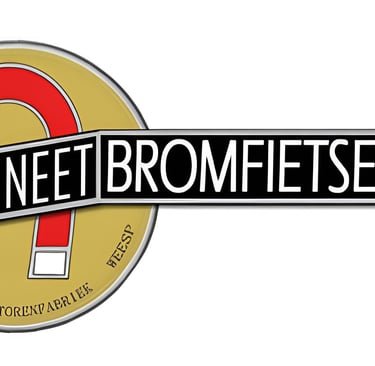Dutch Magnetism: A Chronicle of Magneet's Triumphs and Tragedies
The article chronicles the history and rise of Magneet, a Dutch motorcycle brand, from its beginnings as a bicycle manufacturer in 1922 to its foray into motorized two-wheelers in the 1950s. It highlights Magneet's golden era of the 1950s and 1960s, marked by innovation and popular models like the Cheetah and Thunderbird. The brand's collaborations with European manufacturers and international presence are discussed, alongside its eventual decline in the early 1970s.
MAGNEETNETHERLANDSVINTAGE MOPEDS1950'S
3/24/20243 min read


Dutch Magnetism: A Chronicle of Magneet's Triumphs and Tragedies
Introduction and Early Days
The Magneet motorcycle brand, originating in the vibrant heart of Amsterdam, has a unique narrative that encapsulates the essence of Dutch innovation and engineering prowess. Officially known as Rijwielen- en Motorenfabriek NV of Amsterdam, Magneet began its journey in 1922, primarily as a bicycle manufacturer. It was not until three decades later, around 1952, that Magneet ventured into the realm of motorized two-wheelers, introducing its first mopeds to the world. Leveraging initially Husqvarna and subsequently Sachs engines, these mopeds quickly became synonymous with quality and reliability.
One of the 1960s' most celebrated models, the Cheetah, alongside the early adoption of disc brakes, positioned Magneet as an industry innovator, spearheading advancements in motorcycle technology and design.
Golden Era: The 1950s and 1960s
The 1950s and 1960s heralded the golden era for Magneet, marked by significant innovation and widespread popularity. The Magneet A50 was introduced in 1952, followed by a series of models including the S50, W50, and the iconic Magneet M50 Supersport in 1956, each exemplifying Magneet’s commitment to excellence. The Magneet Globemaster (1957-68), Cheetah, and Sprintmaster further solidified the brand's status in the market. Another notable model, the Magneet Thunderbird (Batavus Magneet TS49) from 1968 to 1972, underscored Magneet's pioneering spirit in embracing disc brake technology. This period was characterized by Magneet's ability to consistently deliver models that met the evolving needs and preferences of riders, ensuring a loyal customer base and significant brand prestige.
Associations with European Manufacturers
Magneet's collaboration with other European manufacturers played a pivotal role in its success story. Initially employing engines from Husqvarna—a testament to the brand's early focus on harnessing the best of European engineering—the brand later shifted to utilizing Sachs engines, a move that represented a blend of Dutch design with German engineering excellence. This partnership allowed Magneet to diversify its offerings and introduce models that catered to a broader audience. The association with these renowned engine manufacturers not only enhanced the performance of Magneet motorcycles but also underscored the brand's commitment to quality and innovation. Moreover, in 1969, a significant corporate development occurred when the bicycle division of Magneet was sold to Batavus, a larger Dutch manufacturer known for its bicycles and mopeds. This move symbolized the intertwined destinies of these Dutch brands, emphasizing the collaborative nature of the industry at the time.
International Footprint: Export Sales and Global Presence
During its peak, Magneet's influence extended far beyond the shores of the Netherlands, marking its presence on the global stage. The brand's mopeds and motorcycles found their way to numerous countries, adapting to and meeting the unique demands of diverse markets. Notable among these was the Globemaster Royal Export model, specifically designed for Portugal in 1967, illustrating Magneet's ability to tailor its products to suit international tastes. Further afield, Batavus, which had absorbed Magneet's bicycle division, began manufacturing mopeds under license in Turkey by 1972, showcasing the brand's widespread appeal and versatility in different markets. This international footprint underscored Magneet's commitment to excellence and innovation, ensuring a niche yet significant presence in the global motorcycle and moped arena.
The Decline and Demise
The decline of Magneet began in the early 1970s, as the market for mopeds started to wane. The fade of the motorcycle and moped craze, combined with changing consumer preferences and the rise of more fuel-efficient and compact cars, marked a tough period for the industry. For Magneet, this downturn was compounded by the sale of its bicycle division to Batavus in 1969, indicating a shift in the company's focus and possibly its fortunes. The early 70s saw the cessation of Magneet's moped production, bringing an end to a legacy of Dutch motorcycle manufacturing that had spanned several decades. Despite this, the bicycles produced under the Magneet brand, both pre and post-acquisition by Batavus, continued to bear the marks of quality and innovation synonymous with the name.
